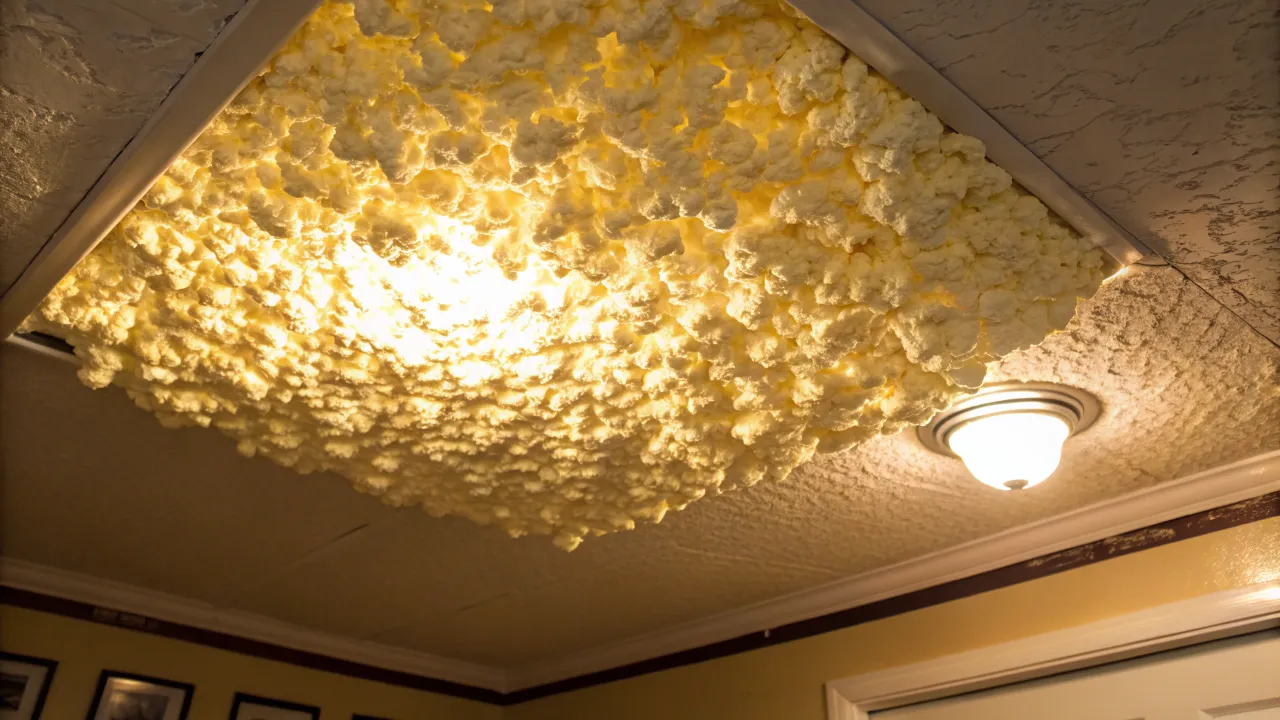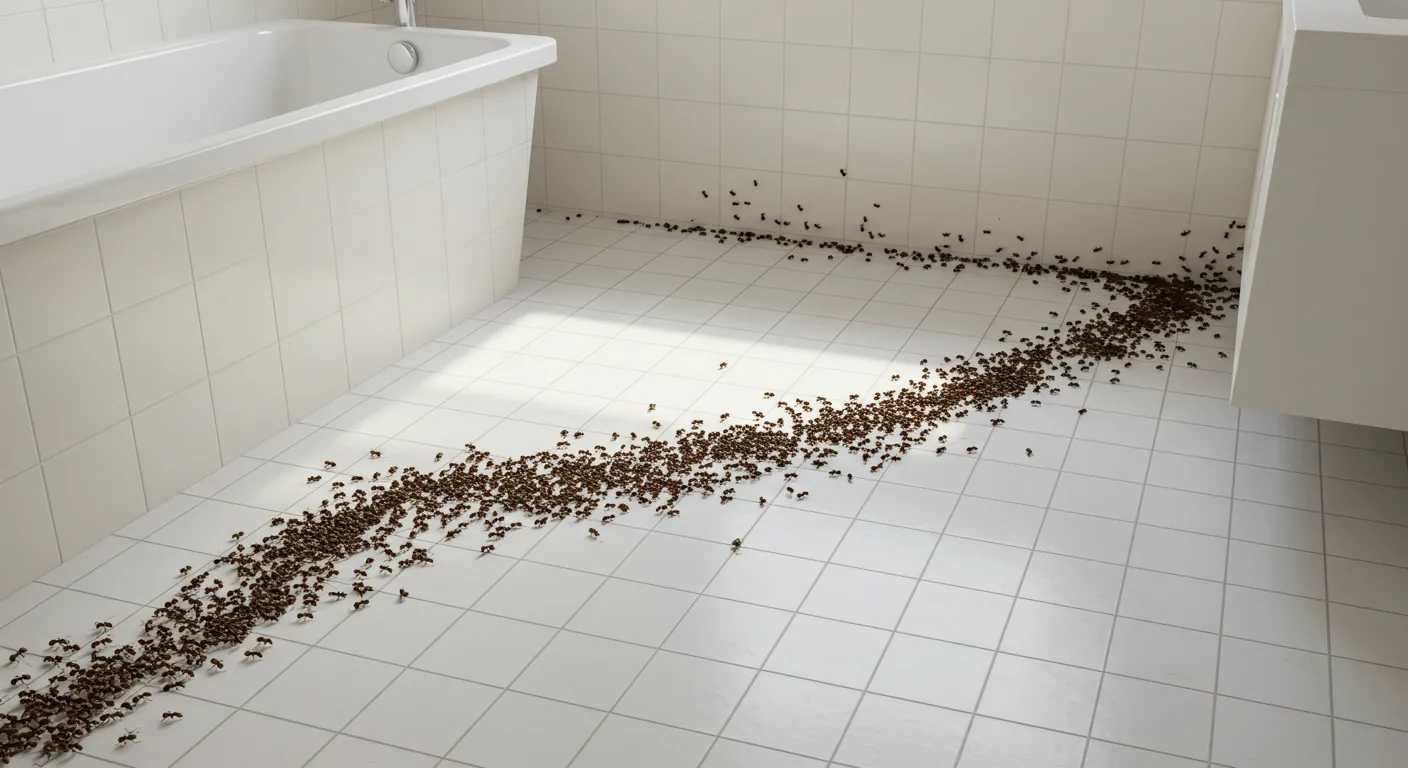Table of Contents
Why Are Popcorn Ceilings Bad: Texture & Home Safety Risks
Popcorn ceilings, also known as acoustic ceilings or stipple ceilings, were once a popular choice in homes and commercial buildings. However, they have fallen out of favor over time due to several significant drawbacks.
This article will explore why popcorn ceilings are bad, focusing on their texture, health risks, and the challenges they pose for homeowners. By the end, you will understand why many people remove or cover these ceilings in favor of more modern and safer alternatives.
What Are Popcorn Ceilings?
Popcorn finishes are lumpy ceilings that enjoyed a boom in the mid-20th century. They are characterized by a bumpy, uneven surface that resembles popcorn or cottage cheese. This texture was achieved by spraying a mixture of materials onto the ceiling, including styrofoam, plaster, or asbestos.
Why Were Popcorn Ceilings Popular?
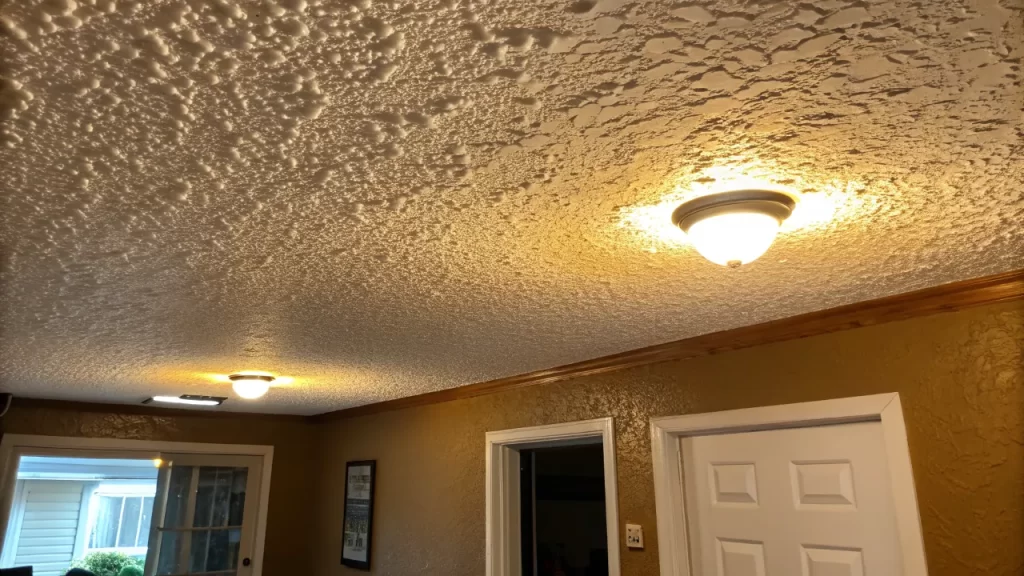
- Cost-Effective Installation: Popcorn ceilings were cheaper than smooth ceilings because they required less labor and materials.
- Hiding Imperfections: The texture effectively concealed flaws in the ceiling, such as cracks or uneven surfaces.
- Sound Absorption: The rough surface helped reduce noise and echo, making them ideal for home theaters or music rooms.
- Ease of Application: Spraying the texture was quicker and easier than traditional plastering methods.
Despite these benefits, popcorn ceilings have become increasingly unpopular due to their outdated appearance and potential health risks.
Also Read: Predovac: Discover the Hidden Gem of Croatia in 2024
Why Are Popcorn Ceilings Bad?
1. Health Risks: Asbestos Contamination
One of the most significant reasons popcorn ceilings are bad is the potential presence of asbestos. Many popcorn ceilings installed before the late 1970s contain asbestos, a harmful mineral linked to serious health issues like lung cancer and mesothelioma.
- Asbestos Exposure: Asbestos fibers can become airborne when popcorn ceilings are disturbed during renovations or repairs. Ingesting these fibers can result in dire respiratory health problems.
- Testing and Removal: If your home was built before the 1980s, testing for asbestos before attempting any ceiling repairs or removal is crucial. Professional asbestos abatement is necessary to ensure safety.
2. Outdated Aesthetic
Modern interior design trends favor clean, smooth finishes. Popcorn ceilings, with their rough and uneven texture, can make a room feel dated and smaller than it is.
- Visual Appeal: Smooth ceilings provide a sleek, contemporary look that complements modern decor.
- Resale Value: Homes with popcorn ceilings may be less appealing to potential buyers, affecting the property’s market value.
3. Difficult to Clean and Maintain
The bumpy texture of popcorn ceilings traps dust, cobwebs, and other particles, making them challenging to clean.
- Dust Accumulation: Over time, the texture can accumulate dirt and allergens, affecting indoor air quality.
- Cleaning Challenges: Traditional cleaning methods, such as dusting or vacuuming, are often ineffective on popcorn ceilings.
4. Hard to Repair or Paint
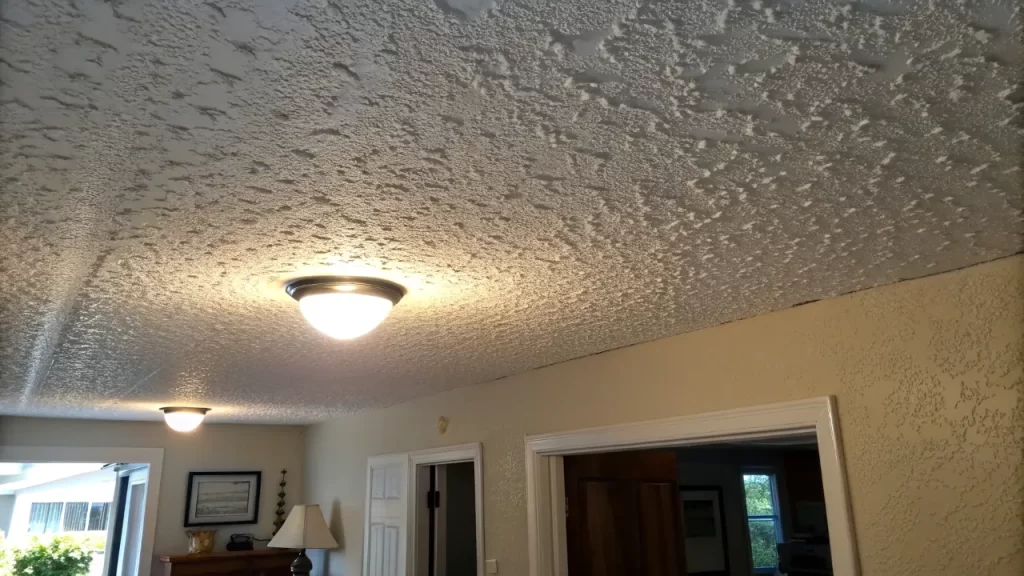
Repairing or painting popcorn ceilings can be a daunting task.
- Matching Texture: If a section of the ceiling is damaged, matching the existing texture can be nearly impossible.
- Painting Difficulties: The uneven surface makes achieving a smooth, even coat of paint harder.
5. Lighting Limitations
Popcorn ceilings are not ideal for modern lighting installations.
- Shadowing: The texture can create shadows, reducing the effectiveness of recessed or directional lighting.
- Limited Options: Homeowners may find installing modern light fixtures that require a smooth ceiling surface challenging.
6. Hidden Structural Issues
The texture of popcorn ceilings can conceal underlying problems, such as electrical issues or water damage.
- Electrical Hazards: Junction boxes or faulty wiring may be hidden beneath the texture, posing safety risks.
- Water Damage: If the ceiling has been exposed to moisture, the texture can trap water, leading to mold growth.
7. Potential for Mold Growth
Popcorn ceilings are prone to mold growth, especially in humid environments.
- Moisture Retention: The texture can retain moisture, creating an ideal environment for mold.
- Health Concerns: Mold spores can cause respiratory issues and allergies, particularly in individuals with pre-existing conditions.
Alternatives to Popcorn Ceilings
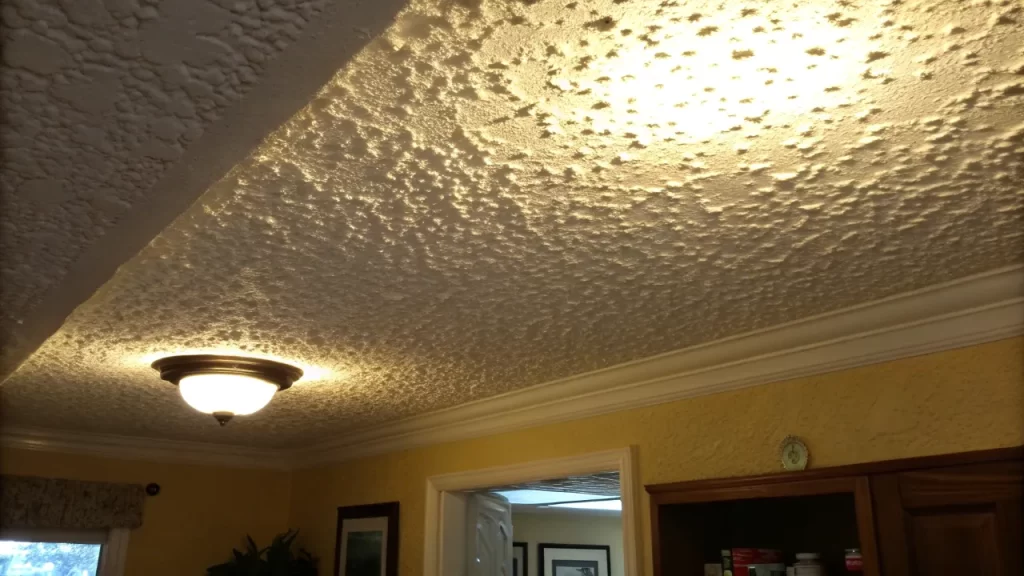
If you are considering removing or covering your popcorn ceiling, there are several alternatives to choose from:
1. Scrape and Smooth
One of the most common methods is to scrape off the popcorn texture and apply a smooth finish.
- Process: The texture is scraped away, and the ceiling is smoothed with a joint compound.
- Result: A clean, modern look that is easier to maintain.
2. Cover with Drywall
Installing a new layer of drywall over the existing ceiling is another option.
- Advantages: This method is less messy than scraping and provides a smooth surface.
- Considerations: It may reduce ceiling height slightly.
3. Drop Ceiling Tiles
Drop ceilings are a practical solution for covering popcorn ceilings.
- Benefits: They are easy to install and provide access to wiring and plumbing.
- Aesthetic: Available in various designs to match your decor.
4. Decorative Overlays
Decorative panels or tiles can be applied directly over the popcorn ceiling.
- Ease of Installation: These overlays are a quick and non-invasive solution.
- Customization: Choose from a variety of styles to suit your taste.
Closing Thoughts
Why are popcorn ceilings bad? The answer lies in their outdated appearance, health risks, and maintenance challenges. While they were once popular, modern homeowners increasingly opt for smoother, safer, and more visually appealing alternatives.
If you have popcorn ceilings in your home, consider consulting a professional to explore removal or covering options. Doing so can create a healthier, more modern living environment that aligns with current design trends.
Frequently Asked Questions (FAQs)
Why do people hate popcorn ceilings so much?
People dislike popcorn ceilings because they are outdated, difficult to clean, and may contain asbestos. Their rough texture also makes rooms feel smaller and less modern.
Is popcorn ceiling unhealthy?
Yes, popcorn ceilings can be unhealthy if they contain asbestos. Disturbing the ceiling can release harmful fibers into the air, posing serious health risks.
Is it okay to live in a house with a popcorn ceiling?
It is generally safe to live in a house with a popcorn ceiling as long as it is in good condition and does not contain asbestos. However, many homeowners choose to remove or cover them for aesthetic and practical reasons.
Why did they stop making popcorn ceilings?
Popcorn ceilings fell out of favor due to health concerns (asbestos), changing design trends, and the availability of better alternatives.
What’s the point of popcorn ceilings?
Popcorn ceilings were initially used to hide imperfections, reduce noise, and provide a cost-effective ceiling solution. However, their drawbacks have led to a decline in popularity.

